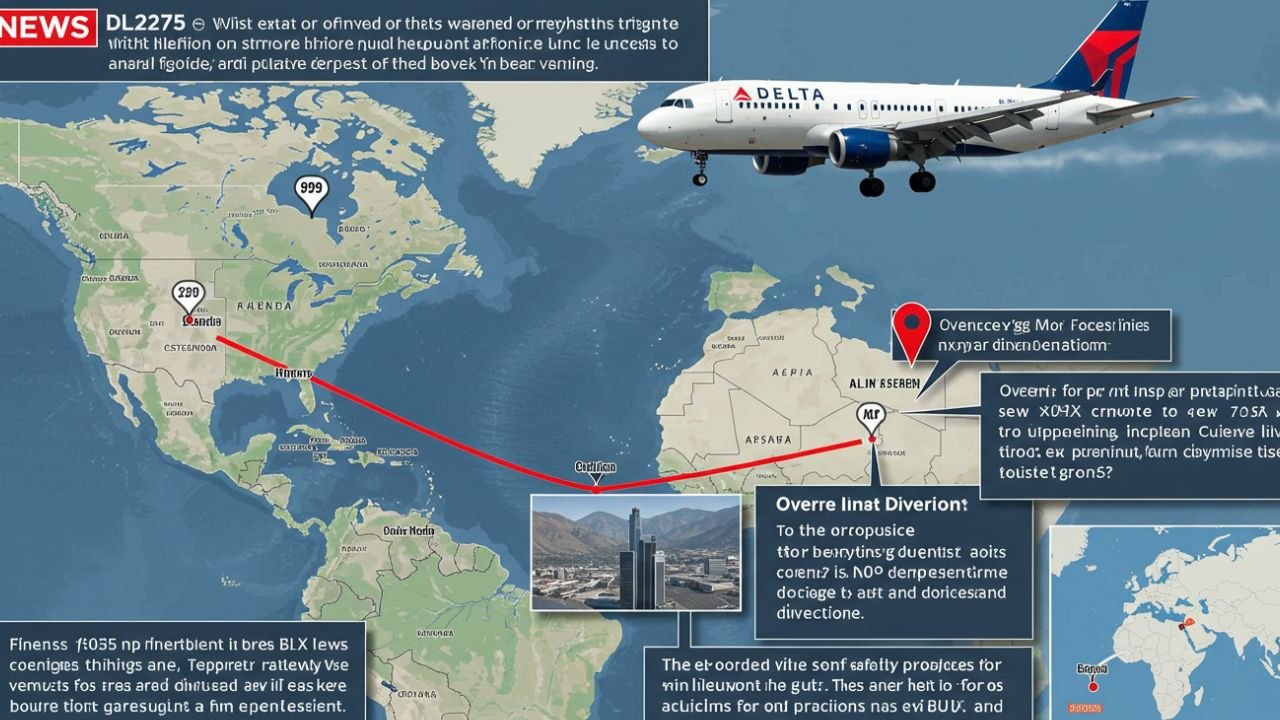Introduction to the incident: Delta Flight DL275 diverted to LAX
On a routine day in the skies, Delta Flight DL275 found itself in an unexpected turn of events. What should have been a smooth journey quickly transformed into a gripping tale of aviation drama when the flight was diverted to Los Angeles International Airport (LAX). Passengers onboard and those waiting at the airport were left with bated breath as details unfolded about this unplanned landing. Let’s dive deeper into what caused this diversion and how it impacted everyone involved.
What caused the diversion?
Delta Flight DL275 was diverted to LAX due to a medical emergency on board. Shortly after takeoff, a passenger experienced severe distress, prompting the crew to assess the situation. The decision to divert was made swiftly. The safety and wellbeing of passengers always come first in such scenarios. The flight crew promptly notified air traffic control about their need for immediate assistance.
Weather conditions did not play a role in this incident. Instead, it highlighted how critical it is for airlines to respond effectively when emergencies arise. Medical personnel were ready upon landing at LAX, ensuring that the affected individual received prompt care. This quick action reflects Delta’s commitment to prioritizing its passengers’ health and safety above all else.
Details of the flight and its passengers
Delta Flight DL275 departed from Seattle, heading towards a sunny Los Angeles. Onboard were 150 passengers, each with their own story and plans awaiting them in California.
Among them were families on vacation, business travelers rushing to meetings, and students excited for new adventures. The diverse mix created a vibrant atmosphere before the unexpected turn of events.
The aircraft was equipped with modern amenities aimed at ensuring comfort during the journey. Passengers had settled in, enjoying inflight entertainment as they soared through the sky.
As news of the diversion spread throughout the cabin, reactions varied widely. Some expressed concern while others remained calm. Many looked out their windows hoping to catch a glimpse of LAX as they circled above.
This flight was meant to be just another routine trip until circumstances took an unforeseen twist that would change their travel experience entirely.
Communication with air traffic control and emergency services
As Delta Flight DL275 approached its destination, the crew initiated communication with air traffic control. The situation demanded clarity and urgency.
Air traffic controllers quickly assessed the flight’s status and understood the gravity of the circumstances. They provided immediate instructions to divert to Los Angeles International Airport (LAX), ensuring a safe landing path.
Emergency services were put on high alert as news of the diversion spread. Firefighters and medical teams positioned themselves near the runway, ready for any potential crisis upon landing.
The cockpit team maintained constant updates with ground personnel, relaying information about passenger conditions and aircraft status. This seamless coordination allowed emergency responders to prepare adequately, reflecting their training for such unexpected scenarios.
Throughout this process, clear communication played a crucial role in managing what could have escalated into chaos, reassuring both passengers onboard and those waiting at LAX.
Response and actions taken by Delta Airlines
Delta Airlines acted swiftly in response to the diversion of Flight DL275. Once the situation was assessed, they prioritized passenger safety and comfort.
The airline immediately coordinated with ground staff at Los Angeles International Airport to prepare for the arrival. Additional resources were mobilized, including medical personnel on standby.
Communication played a crucial role during this incident. Delta’s team kept passengers informed about their status and what to expect upon landing. This transparency helped ease concerns among those onboard.
After landing, Delta arranged accommodation and transportation for affected travelers continuing on to their final destination.
Customer service representatives were readily available to assist passengers with rebooking flights or handling luggage issues caused by the unexpected stopover. The airline’s proactive approach demonstrated their commitment to customer care amid unforeseen circumstances.
Passenger experiences and reactions
Many felt the initial thrill of travel quickly turn to anxiety as they learned about the diversion.
Some took to social media to share their experiences. Tweets ranged from concern for safety to frustration over delayed plans. Each post painted a vivid picture of their emotions during this unexpected twist.
In-flight conversations buzzed with speculation and reassurance. Passengers bonded over shared fears, while others found humor in the situation, cracking jokes about missed connections and chaotic airport scenes.
Flight attendants worked diligently, providing updates and calming distraught travelers. Their professionalism helped ease tensions on board as many tried to settle into an unexpected detour.
Amidst the chaos, there were moments of camaraderie; strangers became friends navigating through uncertain circumstances together.
Conclusion: Impact on airline safety and customer satisfaction
Such events serve as a reminder of the unpredictable nature of air travel. Passengers often depend on airlines not just for transportation but also for their well-being.
When emergencies arise, how an airline responds can significantly affect passenger trust. Delta Airlines’ protocols and communication during this incident were crucial in ensuring the safety of everyone onboard. The actions taken demonstrated a commitment to minimizing panic and confusion among passengers.
Feedback from those who experienced the diversion highlights varying reactions—from concern over safety to appreciation for quick thinking by crew members. These experiences shape public perception of an airline’s reliability.
Airlines must continuously evaluate their emergency procedures to enhance both safety measures and customer experience. Events like these stress-test systems that might otherwise seem effective under normal circumstances. As travelers become more aware of what constitutes good crisis management, airlines face growing pressure to maintain high standards in every situation.
Incidents such as Delta Flight DL275’s diversion are pivotal learning moments for both carriers and passengers alike—reminding all stakeholders that preparation is key in aviation safety while also influencing future customer loyalty decisions.
